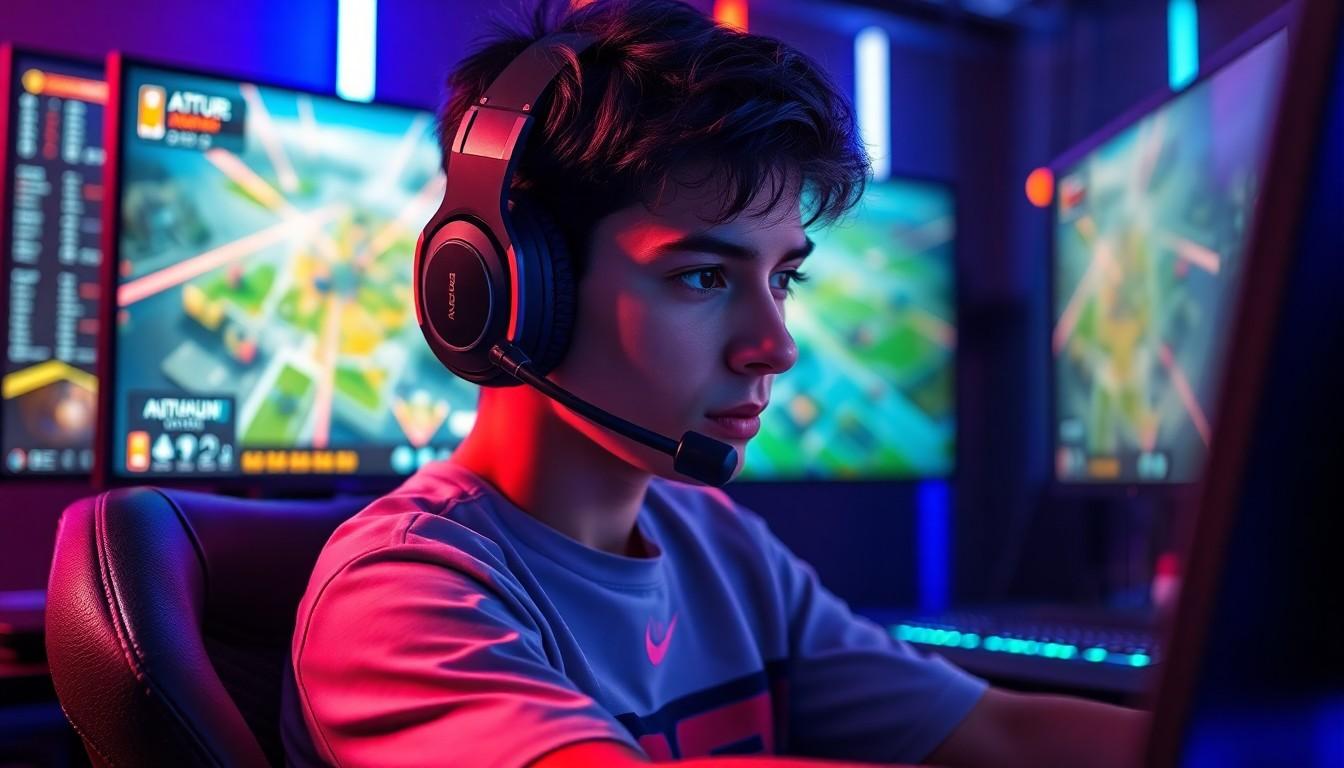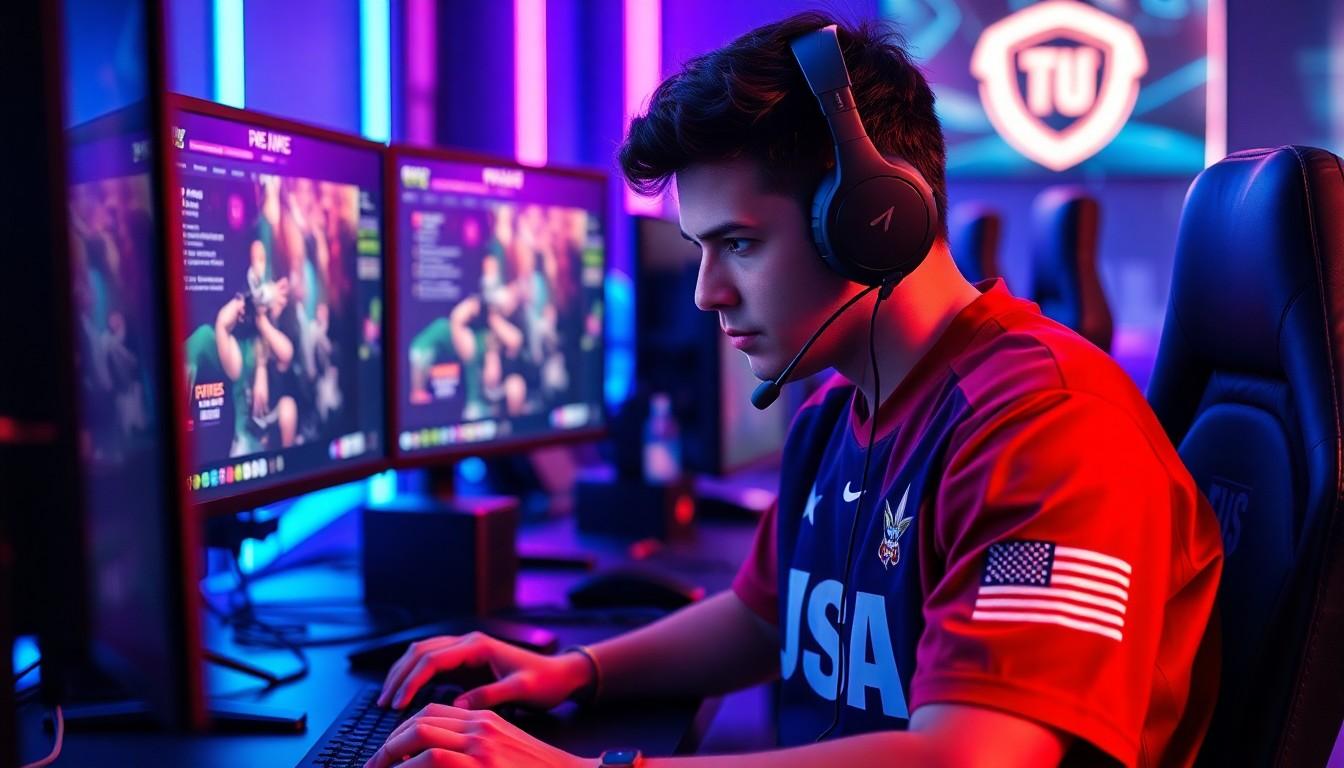
Esports Game Strategies: Unlock Winning Techniques for Competitive Success
In the fast-paced world of esports, winning isn’t just about having quick reflexes or flashy moves; it’s a strategic battlefield where brains often outshine brawn. Imagine a chess match, but with laser beams, power-ups, and the occasional explosion. That’s the essence of esports, where strategy reigns supreme.
Esports Game Strategies
Esports strategies encompass a variety of tactical elements essential for competitive play. Players analyze opponents, map designs, and game mechanics to formulate effective approaches. Understanding the game’s objectives serves as the foundation for creating a winning strategy.
Team composition plays a crucial role in multiplayer games. Selecting characters or roles that complement each other enhances overall performance. Coordination among team members maximizes effectiveness, as proven in team-based games like League of Legends and Overwatch.
Map control defines strategic gameplay. Dominating specific areas can provide valuable resources and vision, leading to better decision-making opportunities. Effective use of in-game communication facilitates timely responses to opponents’ movements.
Adaptation is crucial during matches. Players adjust strategies based on opponents’ tactics and in-game situations, enabling them to gain an edge. Frequent analysis and real-time adjustments demonstrate a team’s capability to thrive under pressure.
Practice significantly enhances strategic execution. Routines develop individual skills and team synergy, fostering improved communication and decision-making. Scrimmages offer opportunities to test strategies against other teams, preparing players for live competition.
Resource management influences overall effectiveness. Players must juggle in-game currency, item builds, and cooldowns strategically. Successful management can dictate the pace of the game and provide advantages in critical moments.
Overall, developing a dynamic strategy within esports requires a blend of analytical skills, communication, and adaptability. Competitive players focus on refining these aspects to improve their chances of victory and achieve sustained success in their chosen games.
Understanding Game Mechanics

Game mechanics significantly influence esports strategies. Players must grasp these mechanics to enhance performance and outmaneuver opponents effectively.
Importance of Game Knowledge
Knowledge about game mechanics lays the groundwork for strategic play. Players familiar with game objectives can create tactics that align with their strengths. For instance, understanding the cooldown timings of abilities can dictate when to engage or retreat. Moreover, recognizing the synergy between different characters pushes players to form effective team compositions. Game knowledge enables quick adaptations to changing situations, ensuring time-sensitive decisions yield positive outcomes. Competitive play demands that participants invest time in studying mechanics, as this effort directly correlates with success.
Analyzing In-Game Dynamics
In-game dynamics shift continuously, making real-time analysis crucial. Players observe trends and adapt their strategies based on opponents’ movements and actions. Notably, understanding opponent patterns allows players to anticipate strategies, improving response times. Engaging in map awareness enhances control over key areas, ultimately contributing to successful engagements. Spotting resource availability, including health packs or power-ups, plays a role in maintaining an edge. Strategic decision-making hinges on accurate assessments of these dynamics, enabling players to pivot effectively based on their observations. Adaptability remains vital in navigating the fast-paced environments characteristic of esports.
Strategic Planning and Execution
Strategic planning and execution form the backbone of successful esports gameplay. Effective tactics involve several key components.
Role of Communication in Teams
Communication fosters synergy among team members. Clear dialogue ensures players understand their roles and strategies. Sharing information about enemy positions and resources enhances decision-making. Team calls regarding engagements can alter game momentum quickly. Utilizing voice chat and pings effectively improves coordination during high-pressure moments. All members must engage openly to brainstorm tactics and share insights for continuous improvement. This collaborative approach cultivates trust and strengthens overall team dynamics.
Adapting Strategies on-the-Fly
Adapting strategies on-the-fly remains essential for success in esports. Immediate adjustments to tactics must follow the flow of the game. Players analyze opponents’ behaviors and modify their approach accordingly. Flexibility in strategies allows for quick counterplays against unexpected moves by enemies. Utilizing in-game cues enables players to pivot swiftly when needed. Regular practice enriches this adaptability by training players to think critically and respond efficiently. Incorporating real-time feedback helps teams evolve their gameplay, enhancing overall performance during competitions.
Popular Esports Game Strategies
Esports strategies encompass a variety of tactical approaches, which players utilize to gain competitive advantages. Two prominent components of these approaches include offense vs. defense tactics and map control techniques.
Offense vs. Defense Tactics
Offensive tactics focus on aggression and taking the initiative during matches. Players often engage in high-pressure plays, aiming to overwhelm opponents quickly. Adaptability remains key; aggressive players adjust strategies based on enemy defenses. Defensive tactics, on the other hand, prioritize protection and resource preservation. Players fortify positions and wait for opponents to overextend, creating opportunities for counterattacks. Effective teams balance offensive and defensive plays, capitalizing on moments of weakness while maintaining their fortifications. This dynamic interplay significantly influences match outcomes.
Map Control Techniques
Map control techniques form the backbone of advantageous positioning in esports. Securing critical areas often provides teams with resources and valuable intelligence. Players utilize various methods, including sightlines and high ground, to dominate specific regions. Control over objectives, such as capture points or resource spawns, can dictate the pace of the game. Communication among teammates plays an essential role in coordinating movements and ensuring proper coverage. Teams that excel in map control consistently outperform opponents through superior positioning. By understanding the nuances of each map’s layout, players enhance their strategic depth, further improving their chances of victory.
Case Studies of Successful Strategies
Case studies provide valuable insights into successful esports game strategies. One notable example comes from Team Liquid’s approach in “League of Legends.” Their victory at the 2020 League of Legends Championship Series involved meticulous map control, where they focused on securing objectives like dragons and barons. By prioritizing these objectives, they maintained an upper hand against opponents.
Another impressive case exists with FaZe Clan in “Counter-Strike: Global Offensive.” Their aggressive playstyle, especially using fast-paced strategies, allowed for early pressure against teams during the ESL Pro League. This tactic enabled them to catch opponents off guard, resulting in numerous swift victories. Effective communication bolstered their gameplay, ensuring all team members stayed on the same page.
In “Dota 2,” OG showcased adaptability during The International 2018. They shifted strategies mid-game, demonstrating flexibility that allowed them to counteract Team Liquid’s tactics. Understanding opponents’ behaviors proved essential in adjusting their approaches, ultimately securing the championship title.
Moreover, T1’s varied character selections in “Valorant” illustrate successful team composition strategies. Their ability to choose characters that complement each other has led to enhanced synergy, facilitating coordinated attacks. Utilizing voice communication effectively helped distill complex strategies into actionable game plays.
Individual performance also plays a critical role in strategy execution. Ninjas in Pyjamas relied heavily on consistent practice routines, which sharpened their skills and reinforced teamwork. Their commitment to practice allowed for seamless adaptations during matches, proving crucial in high-pressure scenarios.
Examining these case studies outlines the importance of strategic planning, communication, and adaptability within esports gameplay. Each example highlights how focused execution leads to success in competitive environments, serving as a model for aspiring players.
Essential for Any Competitive Player
Mastering esports game strategies is essential for any competitive player aiming for success. It’s not just about individual skills but also about understanding the game’s dynamics and collaborating effectively with teammates.
Players who focus on strategic planning and execution can navigate the complexities of fast-paced environments while adapting to opponents’ tactics in real-time. Effective communication and resource management further enhance a team’s performance, allowing them to capitalize on opportunities and secure victories.
By continuously analyzing gameplay and refining strategies, players can elevate their skills and maintain a competitive edge in the ever-evolving world of esports.
